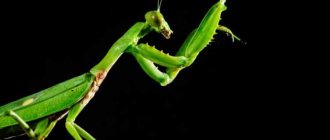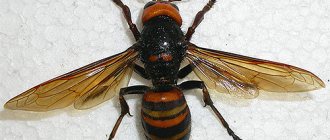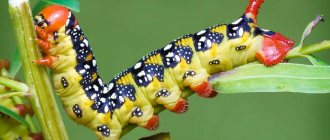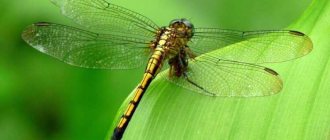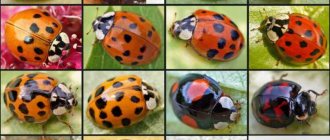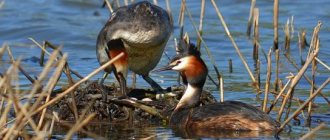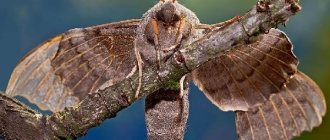The typical representative of the mustelid family is the ferret. They perfectly complement the fauna of the European part of our Motherland, living on forest edges, in the steppes and near large bodies of water. Recently, they are often introduced into homes, because a domestic ferret is a playful and active companion for any family member. However, of no less interest are the wild individuals of the ferret family - predators, aggressive and courageous, who will definitely not allow themselves to be offended.
Appearance
The wild ferret is primarily brown and black in color, with darker tails, paws and muzzle. White fur goes on the forehead, chin and ears. Lighter fur also appears on the sides and belly of the animal. Sometimes you can find other variations of what a ferret looks like - with completely red fur or albino ferrets - these are called furo.
The shiny fur is not thick, but long - on the back it can reach up to 5-6 cm. The fur becomes fluffier after the molting period - in late autumn, and before that it is not so easily soiled and lighter.
The shape of the head is oval, flattened on the sides. The head has a smooth transition line to the neck, flexible and long. Low ears with a wide base stick out on the head. The eyes are small but shiny; most often, brown eyes are found in trochees.
Ferrets have a very slender build. The animals grow from 30 to 50 cm in length. The legs are short (the hind legs are on average only 6-8 cm), but very strong and ideally developed for frequent digging of the ground. The limbs have five fingers with very sharp claws, so if you manage to catch a ferret, it will definitely be able to fend for itself.
Interesting Facts
Ferrets were domesticated more than 2 thousand years ago and since then have held a strong position among popular pets. There are many interesting stories and facts associated with small predators that go back far into the past.
Interesting Facts:
- In Europe, a ferret or ermine was considered the most expensive and valuable gift for people of the upper class. Small predators were valued not only for their exotic appearance, but also for their practical benefits.
- The fluffy fur of the animals often served as bait for fleas, which settled in the folds of the lush creolins and wigs of European fashionistas.
- Small predators were ideal protectors from rodents, so they were housed not only in warehouses and barns, but also taken into the bedroom.
- Leonardo da Vinci’s well-known painting “Lady with an Ermine” depicts a ferret.
- Ferrets sleep can last about 20 hours a day. Sometimes members of the species fall into such a deep sleep that it is simply impossible to wake them up.
- All newborn ferrets are initially covered with white fur and only bloom with age.
- The nimble and agile animals were used to lay cables in Boeing aircraft, since flexible and agile animals are able to penetrate even the narrowest cracks.
- Recently, domestic ferrets began to have their scent glands removed. This measure helps to partially get rid of the unpleasant musky odor when keeping animals in apartment conditions.
- The ferret is able to dig a hole 3-4 meters deep in just one hour.
The Australian government prohibits the import of ferrets into its territory. Perhaps this is due to the instructive example that New Zealand has become. The introduced ferrets multiplied and became a threat to the local fauna.
Varieties
Stepnoy
The largest of all ferret species. They grow up to 56 cm, and their weight can exceed 2 kg. They are also called light because of the specific undercoat that shows through under the sparse brown hair. The color on the limbs and tail is dark, while the muzzle is painted with a mask.
It is not difficult to say how many years the steppe ferret lives - their age rarely exceeds 10-12 years.
Forest
The color of the forest ferret does not differ in the bright contrast of the color of the body and legs - the black-brown color of the body is complemented by the black color of the limbs and tail. They are inferior in size to their steppe counterparts - 38-48 cm in length, and weight from 500 g to 1.5 kg.
About 14 years is how long forest ferrets live, which is significantly longer than the life expectancy of their domesticated relatives.
Blackfoot (American)
The smallest individuals in the classification - their length rarely reaches 40 cm. Their fur is white at the base and dark at the tips. Overall this gives a picture of a beautiful yellow-brown color. There is a specific mask on the face.
The species is listed in the Red Book, and the life expectancy of black-footed ferrets does not exceed 6-9 years.
Description
In terms of external features, the forest ferret is not much different from most mustelids of the genus Mustela: squat with short legs armed at the end with sharp long claws. The body is elongated and flexible. The weight of males is 1000-1500 g, the weight of females is 650-815 g; the length of males is 350-460 mm, the length of females is 290-394 mm. The color of an adult ferret is black-brown, the belly, legs, chest, throat, and tail are almost black (there are color variations, pure red and white). The head has a contrasting pattern reminiscent of a mask. Under the tail, ducts of specific anal glands open, the secretion of which has a pungent odor. It differs from the steppe polecat in the dark color of its fur, the absence of a sharp contrast in the black color of the legs and fur, the black color of the entire tail, and from the minks and kolin - in color (minks are chocolate brown, the kolin is red). Geographical variability in color, fur quality and body size is insignificant; about 7 subspecies are recognized as real, 2 of which live in the territory of the former USSR. It produces fertile hybrids with the steppe polecat and European mink (see Honorik).
Habitats
Animal populations were distributed in the following geographical areas:
- Steppe ferrets in eastern Europe (Hungary, Romania, Czech Republic, Slovakia and Ukraine), Central Asia, Russia (from the Ural Mountains to the Far East) and in the eastern regions of China.
- The forest ferret can be found almost everywhere in Eurasia, especially west of the Ural Mountains.
- The central part of North America, namely east of the Rocky Mountains, is where black-footed ferrets live.
European mink population
The European mink population is rapidly declining. According to scientists, the number of animals in the wild has decreased by 50% over the past 3 generations, and continues to decline. The decline in mink numbers in Europe began in the 18th century, when the animals disappeared from Germany, Austria and Switzerland. At the beginning of the 20th century, the animals became extinct in the Czech Republic, Poland, Bulgaria and Hungary. In Latvia, Finland and Lithuania, minks were considered extinct, but a few individuals were spotted in the 1990s. In Estonia, Belarus, Moldova and Ukraine, as well as Spain and France, by this time only small fragmented populations remained. In the European part of Russia, mink was found everywhere at the beginning of the 20th century, but the number of animals began to decline rapidly in the 1950-1960s.
The most likely reasons for the decline in the number of European mink:
- reduction of natural habitat due to river drainage and agricultural land expansion. This happened throughout the 19th - 20th centuries throughout Europe - in Germany, Russia, Moldova, Ukraine, Poland, Hungary, the Baltic countries, and others.
- excessive hunting of animals for their valuable fur, especially in Russia. At the beginning of the 20th century, 40-60,000 skins were mined per year in Russia, and about 3,000 in Finland.
- a sharp decline in the number of broad-toed crayfish. These crayfish were almost completely destroyed in Europe due to the crayfish plague.
- stiff competition from American mink. American mink was brought to Europe in 1920-1930. The American species is 20-40% larger than the European species, reproduces a month earlier, and is also not so strongly attached to the shores of reservoirs, so it is easier to adapt to changed living conditions. The number of European minks was falling even before the arrival of American minks, but fierce competition for resources and diseases brought from America accelerated the decline in the population.
Habits and lifestyle
The wild ferret is a predatory animal, which is expressed in its distinctive features - aggressiveness and courage. They will not be intimidated by a confrontation with a larger opponent. Fearlessly taking on a fight is in the order of things for them.
In addition, ferrets are also characterized by ruthlessness towards their prey - by attacking a bird’s nest, the animal will satisfy its hunger and then kill every inhabitant. And all this is said about a ferret - an animal that from the outside can be called very cute.
Ferrets do not form packs, but maintain contact with their closest relatives. Moreover, in these relationships one alpha male dominates, which is more clearly expressed both during normal times and during mating. But each of the individuals has its own territory for living, which they mark by making regular rounds.
The activity of the animal occurs at night. During the day the animal sleeps, having previously dug a hole for itself. The burrow can be permanent - with a small hole and a chamber, or temporary - if movements at dawn find the animal far from home. In this case, these small predators do not shy away from using other people’s holes - hare or badger ones. And when the weather is bad, the ferret can spend several days in the hole without leaving.
Taming methods
Taming a wild ferret is not an easy task. Predators that are caught in natural habitats will not completely trust a person even after several years. The offspring of wild ferrets born in captivity will be less amenable to training, but in order to produce cubs, the pair of animals must be provided with favorable conditions for mating.
The gullibility of these predators largely depends on age. If a ferret is 1.5-2 months old, then over time it can get used to a person, but it will not become a complete pet. A ferret over 5 years old is not at all tamed and shows aggression towards people. Such animals are very difficult to train, since constant stress can cause a ferret’s heart to break.
At home, wild animals need to be provided with a place to live, similar to their natural habitats. Also, an untamed ferret should be kept in a closed enclosure, since the animal can exhibit a high level of aggression out of fear. The cage for a predator should be multi-tiered, with a system of pipes simulating underground conditions. In natural conditions, ferrets move a lot, so housing that is too cramped can cause prolonged stress. You can make such a cage yourself; to do this, you should watch instructional videos or photos on the Internet.
It is extremely important to exclude possible noises and strong odors: animals born in the wild are extremely sensitive to this.
Ferrets recover after being carried for about 2 months. During this time, the animals should be kept at rest. Initially, the animal will hide in a shelter or corner, will not eat, and will loudly gnaw at the cage mesh at night. Over time, the animal will get used to the new living conditions and human presence. It is also important to stay close to the predator while it is feeding. In this case, the pet will begin to recognize the owner’s smell and associate it with food.
You should give the animal a name and constantly refer to it during feeding: this way the ferret will quickly get comfortable and get used to human speech. There is no need to hand feed a wild predator in the first months: it can easily scratch or bite through the skin.
The taming process takes about a year and requires a lot of effort, but a tamed wild ferret will still not become a domestic ferret and will retain its independent character.
Nutrition
Ferrets are exclusively nocturnal animals. Only very strong hunger can force one to interrupt daytime sleep and go hunting during daylight hours.
The following representatives of the animal world become prey, namely what ferrets eat in nature:
- what the ferret eats first of all are small rodents: rats, hamsters, mice, gophers, moles and ground squirrels, hares and rabbits;
- lizards or small amphibious reptiles;
- They easily destroy found egg clutches, and sometimes attack birds.
Animals do not eat plant foods due to their digestive characteristics. However, a ferret can get nutrients from, say, fruit by eating small herbivores. It is also worth noting that in difficult situations, if it is impossible to find anything that ferrets usually eat, they are able to eat the carcasses of already dead animals.
Accommodations
Before you get an animal, you need to prepare everything for its appearance, namely, buy a large ferret cage, a food bowl, a litter tray and several entertainment items.
Even if you plan to give your ferret more freedom to move around the apartment, keep in mind that he still needs a cage. His home will be associated with a hole where ferrets live in nature.
The food bowl should be made of heavy material - ceramics or metal, since the animal will turn over and hide a light plate.
As for the tray, it is better to purchase it at a specialized pet supply store. Typically, ferret litter boxes are triangular in shape.
It is better to go to a pet store for high-quality and safe toys for your new pet. So, the ferret’s home is ready, now we need to prepare the apartment itself.
The following things need to be done first:
Seal all openings in the house or apartment that the ferret can get into and get stuck there.
Make sure that all the windows in your apartment close well, check the locks on the vents, as the ferret can open them on his own.
Ferrets are very curious and agile animals, so you should keep all medications in a safe place. The same goes for laundry and cleaning products.
In nature, ferrets are born to dig, so the only way to save indoor flowers is to remove them or find a safe place where the dexterous animal cannot get into.
Hide all wires in cable channels, as they are often chewed by ferrets.
Ferrets' intelligence is very well developed and they are excellent at learning from experience. If the animal was able to open the locker at least once, then it will do it again and again. If you don’t want to constantly collect scattered things, then install special locks on the cabinets.
Reproduction
The mating period varies depending on the type of ferret: steppe ferrets begin rutting at the end of February, and forest ones - starting in April. Moreover, the rutting period may last until the end of the calendar summer.
Ferrets become mature enough to procreate at 10-12 months of their life. It is not customary for ferrets to have mating games, and the mating itself looks quite cruel: the male suppresses the female’s resistance in every possible way, biting her scruff and withers.
Females carry their offspring for almost a month and a half, and they have 4-12 cubs in a litter. Newborn ferrets are very helpless and are born blind, but development occurs quickly - after only two months of life, the mother begins to feed them meat.
Behavior
A ferret does not need company to go hunting. These are solitary animals; they prefer to hunt on their own. For one adult male there are about 2.5 thousand hectares of land where he will hunt. To prevent strangers from lingering in this territory, the male periodically goes around these places and places fresh marks that scare off competitors. Because of this, the males' areas rarely overlap one another. Females are less picky. They don’t care where to hunt; their territories are smaller and sometimes have no clear boundaries at all.
Enemies
In winter, the main dangers for ferrets are wolves and foxes. An encounter with wild cats, birds of prey (eagles, golden eagles or night owls), as well as large snakes can also become unpleasant.
Among the creatures dangerous to ferrets, humans can also be mentioned. Its impact, namely the destruction of nature reserves, the construction of roads and housing in wild areas, can cause the disruption of the ferret ecosystem and the destruction of their habitats.
Character
Like any predator, the ferret prefers to stay awake in the dark, that is, at night. Owners of pets notice this feature in them. It is unusual for animals to migrate from one place to another: they dig holes for themselves and can live their whole lives in one place. Only something unexpected and serious can force them to leave their familiar and familiar territory.
The burrows of animals are characterized by increased comfort. The inside of the hole is covered with dry grass and leaves. The animal will happily take a ready-made hole dug by another animal, for example, a fox, and arrange it to its liking. Ferrets are not afraid of people. If necessary, a basement or barn in a person’s home can be suitable for housing.
Often hunger drives these predators out of the forest; they approach human habitation in search of food. After their visit, chickens and other small poultry disappear from barns and farmsteads.
Females can be distinguished by their activity, restlessness, developed intelligence, and playfulness. Females are much easier to train. At the same time, males are distinguished by increased affection for humans, they are calm and can sit still for a long time.
Domestication of the ferret
These animals can be domesticated - they are very playful and quickly get used to their owner (especially females). They can be trained to a litter box without any problems, but if the animal likes another place to relieve itself, then another container will need to be added there.
It is worth considering that due to natural influences they will not get along with birds, small rodents or reptiles. However, they are able not only to coexist with cats or non-hunting dogs, but also to be friends.
Curiosity is another important quality of these animals. So, you should prepare for the fact that the animal will regularly and carefully examine all possible nooks and crannies in the house, climb into trash cans (and sometimes fall asleep there), and also dig up soil in flower pots.
There is another point that you can pay attention to - their life expectancy. How long ferrets live at home mainly depends on proper care and maintenance, but on average it is 5-9 years.
How to fight?
How to protect a bird from an animal that strangles chickens? In our case, a ferret. Using a trap or trap. You can use a rat trap, or you can make your own.
For this we need:
- Aluminum bucket. Plastic is lighter, and a ferret is quite capable of chewing through it.
- Two-liter plastic bottle.
- Bait (beef, lamb or chicken meat).
We make a trap like this:
- Cut off the bottom and neck of the bottle.
- We put bait in one part of it.
- We put it on the edge of the chair.
- We put a bucket under the chair.
When the ferret reaches for the tasty treat, his weight will outweigh the bottle. And the uninvited guest will fall into the bucket. The disadvantage of this trap is that it does not close on its own. The owner of the chicken coop will have to stay in the house at night in order to have time to close the bucket with the ferret.
Someone catches the pest, armed with thick gloves and an old coat. But they throw a coat on the animal, and then grab it with gloved hands. But the ferret is a fast and agile creature. It is not always possible to catch him this way.
What to do with a caught pest? Ideally, take it out into the forest and release it into the wild. Destroying is not entirely humane.
Care
When getting a ferret, it is important to remember the need for vaccination. Diseases such as rabies, plague, leptospirosis will safely bypass the animal if it is given the appropriate vaccinations. It must be remembered that ferrets do not tolerate vaccinations well: they often develop allergic reactions to vaccines. Therefore, in parallel with the vaccine, the ferret needs to be given an antihistamine. Only half an hour after the indicated injection, having made sure that there is no negative reaction, you can leave the clinic and go home.
If keeping a ferret at home does not involve producing offspring, it is better to resort to sterilization of the animal. With this you can reduce the release of unpleasant odors.
Ferrets need to be bathed when kept at home, but this should be done no more than 2 times a month. For bathing, water around +37 degrees and cat shampoo are suitable. If everything is done correctly, then bathing can soon become a ferret’s favorite pastime: animals love to dive and swim. After bathing, the ferret is dried with a towel, and he must dry himself.
It is necessary to trim the claws in a timely manner; they tend to grow back quickly.
